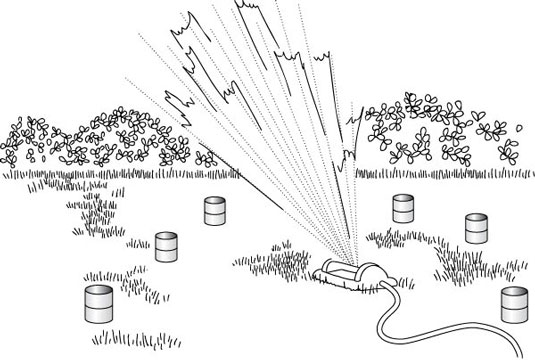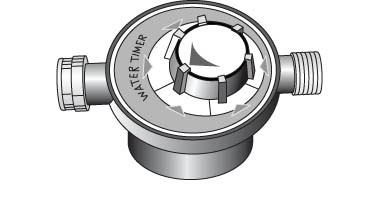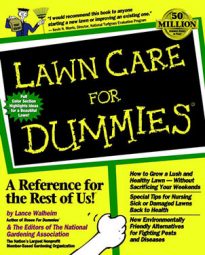Choosing the right lawn sprinkler is one of the most important decisions you can make if you want a healthy lawn without wasting water. Sprinklers are either portable or fixed:
Portable sprinklers: Portable sprinklers come in myriad styles with varying application rates (how fast they apply water) and application patterns (covering square, round, or rectangular areas). Portable sprinklers also vary by how large an area you can cover, but that area is further influenced by how high you turn on the hose and the amount of water pressure. Portable sprinklers vary in price from very inexpensive to quite costly.
The main disadvantage of portable sprinklers is that you need to move them around by hand. On large lawns, this task can be a real chore. Another problem with portable sprinklers is uneven distribution of water within the sprinkler pattern.
After you choose a sprinkler, perform the trusty can test, so that you know how long to run the sprinklers and how you need to overlap the patterns to provide complete coverage.
 Place cans around the lawn to see how the water is distributed.
Place cans around the lawn to see how the water is distributed.Permanent sprinklers: Permanent, in-ground sprinkler systems have many advantages over portable sprinklers and are really the best choice where summers are dry or where lawns are large. Here’s how the advantages stack up:
You can connect permanent sprinklers to timers and fully automate them.
You can precisely design placement so that all parts of the lawn are watered evenly without runoff.
You can hook up permanent sprinklers to soil moisture sensors so that the lawn is watered only when needed.
You can connect permanent sprinklers to rain sensors so that they automatically shut off when it rains.
Permanent sprinklers offer more flexibility in terms of application rates, uniform distribution of water, and spray patterns.
Of course, the main disadvantage to permanent irrigation systems is their cost and the labor involved in installing them. The ideal time to install a permanent irrigation system is when you plant a lawn. Still, you can dig up some grass and install in-ground sprinklers anytime.
Even if you have a fully automated irrigation system, you’re not off the lawn-watering hook forever. You still have to keep an eye on the system to make sure that it operates properly. You have to adjust the timer with the seasons and maybe even turn it off in winter. And remember: Apply less water when the weather is cooler, more when it’s hot.
Do you turn the sprinklers on and forget about them for two hours, and then find out you’ve nearly washed away the entire neighborhood? Buy an inexpensive timer that hooks up between your faucet and your hose. Set it for the appropriate time, and the timer shuts off the sprinklers for you. It can also water your lawn while you’re on vacation.

The one most important piece of advice about hoses is this: Don’t buy a cheap hose. Spend a little money and buy one made of high-grade rubber, laminated filament, or other quality material. Buy a hose that rolls up easily in any weather and doesn’t kink. Cheap hoses are a curse!

